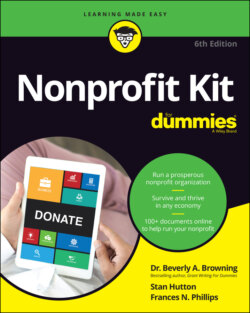Читать книгу Nonprofit Kit For Dummies - Stan Hutton, Beverly A. Browning - Страница 71
Big boards or little boards
ОглавлениеOpinions differ about the ideal number of board members. One school of thought holds that big boards are better because the members can divide work among more people, consider more diverse viewpoints, and reach into the community more extensively. Other people say that smaller boards are better because maintaining a working relationship with a smaller group is easier and decision-making is better because the board has to consider fewer opinions. Those who support small boards also say that board members can easily become invisible in a large group, meaning that no one will notice if they fail to do their share of the work.
In our opinion, there is no single correct answer to the board-size question. According to a 2010 BoardSource survey of its members, the average size was 16 members and the median size was 15 members. Nonprofits vary widely in size, function, and type, so what works for one nonprofit may not work for another. Nonprofit board size is truly a case where the phrase one-size-fits-all doesn’t apply.
Consider these points when setting your board’s size:
Start-up nonprofits tend to have smaller boards than more mature organizations. Start-up budgets tend to be smaller, and building a board of directors takes time. State laws generally specify the minimum size required (often, three members).
Boards that are actively engaged in fundraising for major gifts and special events tend to be larger because both fundraising techniques are fueled by personal contacts and friendships. The more board members you have, the more personalized invitations you can send. Some large cultural institutions have 50 board members or more.
Boards that govern nonprofits funded mostly by grants and contracts tend to have fewer members, perhaps an average of 10 to 16 members. Board members in these nonprofits usually have fewer fundraising responsibilities for the organization and frequently are representatives of the communities or clients served. They also may have professional experience in the types of service provided by the nonprofit.
